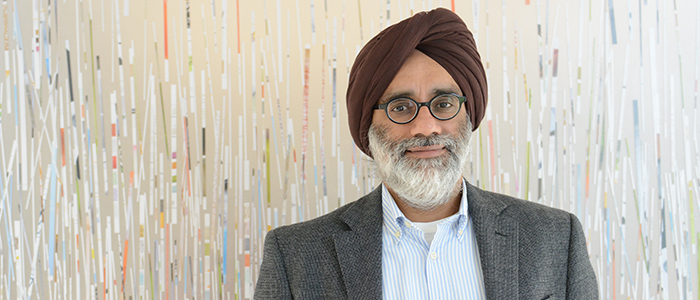Dr. Amardeep Thind authors chapter in Disease Control Priorities, 3rd Edition series

Dr. Amardeep Thind, director of the Schulich Interfaculty Program in Public Health, professor in the Departments of Epidemiology and Biostatistics and Family Medicine, and Canada Research Chair in Health Services Research, has authored a chapter on prehospital and emergency care for the first volume of the Disease Control Priorities, 3rd Edition (DCP3) series.
Published by the World Bank Group, the DCP3 Essential Surgery volume expands on the second edition by examining new evidence for the unmet need and potential impact of surgery on saving lives in low- and middle-income countries.
Dr. Thind discusses his involvement with DCP3, and why he has dedicated his career to the study of public health.
Why have you chosen to study access to health care — specifically for vulnerable populations — in Canada and abroad?
I am originally a head and neck surgeon from India, and one of the things you get as part of your training is a brutal look at socio-economic conditions. The most common cancer in India is oral cancer because people chew a carcinogenic betel nut.
We wondered why so many people with late-stage oral cancer were coming to us when we could not cure them. It turned out that these people were the poorest of the poor. If they took a day off work to see us, who would feed their kids and where would they get the money to buy groceries? Instead of seeking treatment earlier, they would soldier on and seek care only when it was too late.
The question became how do we design a better health care system that takes into consideration the social determinants of health? That is what piqued my interest in public health.
What is the overall goal of the Disease Control Priorities Network and DCP3?
The Disease Control Priorities is a program that started approximately 20 years ago and is now in its third iteration. The broad view of the program is to give policy makers in low- and middle-income countries (LMICs) tools and information about policies and platforms they can use to address health care challenges in their countries.
DCP3 maps out the burdens of disease, interventions, treatments and the cost-effectiveness of treatments and platforms for conditions that are most prevalent in LMICs. Policy makers can pick and choose what is most appropriate for their situations.
How are you involved with the first volume of DCP3?
I got involved as part of the second edition of Disease Control Priorities about 10 years ago. A group of us felt it was important to put surgery on the map because until that point, the common belief in the medical community was that surgery was too expensive a treatment modality and low-income countries should focus on interventions such as vaccinations and antenatal care provision.
At the time, we had anecdotal evidence that surgery was beneficial, so we wanted to examine its cost-effectiveness. We used existing data to show that surgery, especially in the form of a district hospital, was a cost-effective way of providing health care in LMICs.
For DCP3, my team looked at the burden of disease that is amenable to emergency and pre-hospital care, and the existing structures in the LMICs through which this care is delivered. We assessed the literature for cost-effectiveness and made suggestions on how to move forward.
What are the cost and societal implications for adopting the surgical priorities outlined in DCP3?
We have established without a doubt that surgery is amongst the most cost-effective treatments for many conditions, including road traffic injuries, obstetric emergencies and common conditions like cataracts.
The World Health Organization (WHO) and other international health care agencies are pushing for universal health coverage. One of the salient points in this volume is that surgery should be a prominent part of universal health care. It would cost less than $3 billion a year. The benefit-to-cost ratio is ten-to-one.
Low-income countries should also support district hospitals, as most people, especially in the rural areas, obtain care there. Nearly 28 of the surgical procedures we studied are performed at a district hospital and they are cost-effective.
If we were to implement all the recommendations in DCP3, we could avert seven per cent of deaths (approximately one million) in low-income and developing countries.
What are some of the takeaway lessons here for students entering the field of medicine?
As I reflect on my career, I can think of two important lessons. The first is to always keep a global perspective. In today’s world, we are all interconnected in terms of the movement of people and access to technology. We need to keep a global world view.
The second is to not believe the established truth. Trust, but always verify. Look at the evidence, which is what we did 10 years ago.








